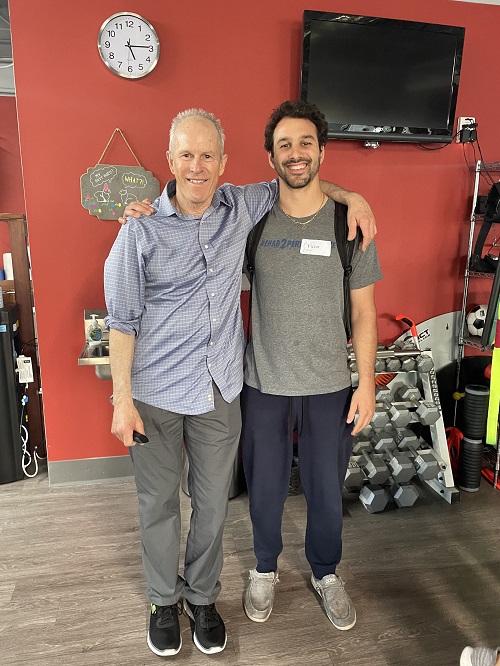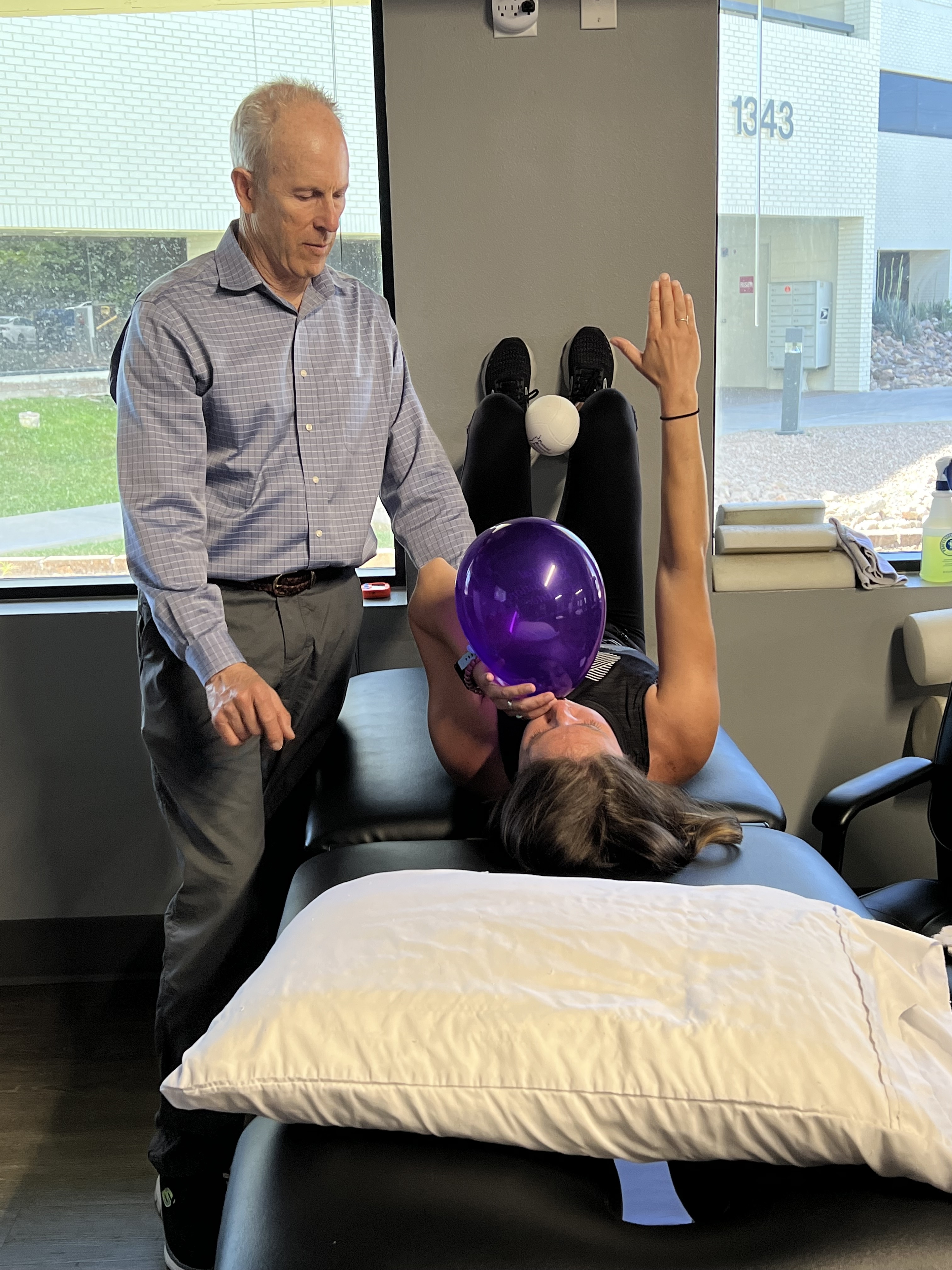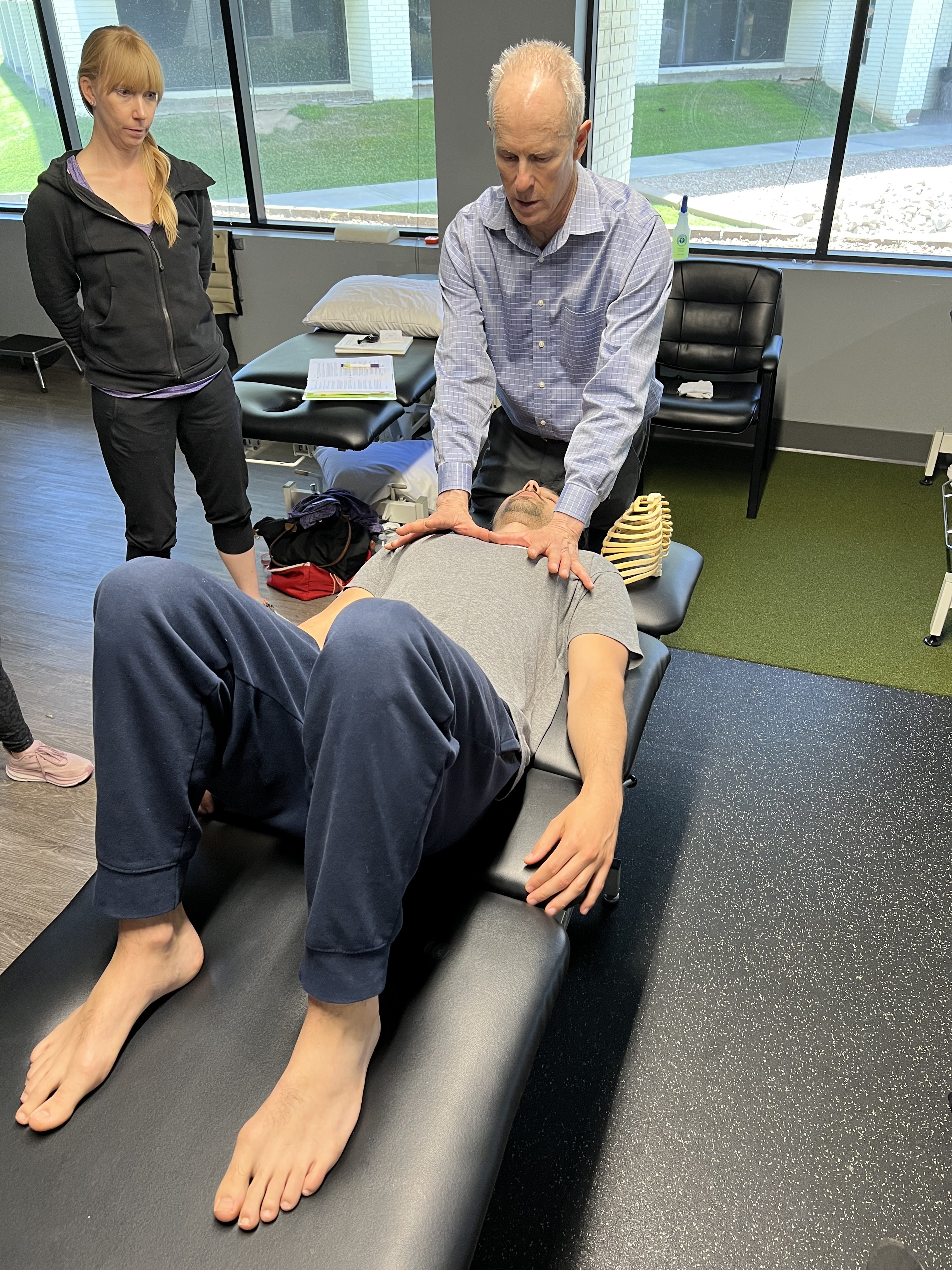Postural Respiration was presented April 15-16, 2023 at Spooner Physical Therapy in Chandler, AZ to an enthusiastic mix of PT’s, Chiropractors, OT’s and fitness professionals. There were students from Alaska, California and Idaho that made the trip to AZ. Dr. Victor Elmurr, D.C. was the motivating force in contacting the staff at Spooner several months ago and facilitated the return of PRI to the Phoenix area.

Among the new attendees to PRI, most of the students were new to Postural Respiration and their purpose was to understand and integrate delivery of airflow into the thorax with their knowledge of pelvis, lumbar spine and femur myokinematics. The response from them, and understanding that this course is the flagship of PRI, was that this course completes a picture of diaphragmatic function and how it affects not only delivery of air pressure sense into the thorax but the position, posture and movement of the entire axial skeleton.
Since posture is not a static concept often thought of in a normal sense, the dynamic, tri-planer function of air flow pressure and sense allowing alternation, reciprocation and variability were all defined and experienced by every student.
As with every Postural Respiration course, Superior T-4 is the patho-mechanical portion of the weekend that is explored in detail on day two. Rhythmic airflow and it’s physiologic effects are discussed on day one in terms of dynamic airflow considerations. Next, the importance of the first rib, especially on the right, is discussed in this context of rhythmic airflow and the first rib being an "initiator" of rostal to caudal rib movement. With overuse of accessory muscles like the scalenes, the first rib will be lifted out of "sync" with the ribs below leading to patho-mechanical respiration as described in this course.

One of the students was used as a "demo" on the first day of the course for PRI exam, NMT and then a left ZOA manual technique. The inability to adduct a femur along with positive BC testing after NMT and manual techniques on the first day lead into day two of the course to explore if this individual was a Superior T-4. With definitive testing and after following the treatment guidelines on page 50 in the course manual, his Superior T-4 was discovered, treated and resolved for everyone to experience the progression to resolve patho-mechanical respiration considerations.

This course was such a pleasure to teach and thank you to the staff at Spooner especially Jessica who got there early and stayed late to lock and clean up. Thank you also to Carly, Sarah and the rest of the Spooner crew and thank you Ben for allowing us to share PRI with your clinic and the community.


